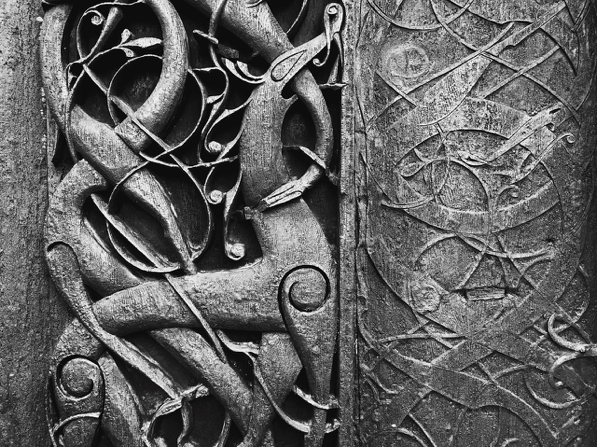Based and inspired by Arabian Nights and other 13th-century folklore, The Thief and the Cobbler (1995) directed by legendary animator Richard Williams follows the parallel stories of a shy cobbler named Tack and a nameless kleptomaniac thief. Tack falls in love with the beautiful Princess Yum Yum of the Golden City after she saves him from the wrath of the grand vizier Zig Zag. Together, they must save their kingdom from death and destruction by retrieve the 3 golden balls that protect the city after the thief's failed attempt at stealing them, causing them to fall into the hands of Zig Zag who plans to marry princess Yum-Yum and rule the city.
Read MoreIt is easy to argue that pornographic animation is always transgressive, for it directly confronts hard-won stereotypes that animated films are somehow a children’s medium, or that it is a type of media watched solely for laughs that cannot be taken seriously. To consider the creative potentials of pornographic animation is to therefore theorize the plurality of what animation truly is as a medium. But the very existence of pornographic animation also threatens preconceived ideas that there would be such a thing as authentic pornography, that is a kind of pornography in which performers are actually enjoying themselves and not ‘lying,’ versus faking and over-performing.
Read MoreThe month of January marked the celebration of a milestone anniversary at the BFI Southbank in London with “Cartoon Saloon at 25”, a season dedicated to the Kilkenny studio. The Short Films of Cartoon Saloon, also part of the London Short Film Festival 2024, showcased eight shorts by many of the key figures of the studio. The programme exhibited a great stylistic variety, while also displaying a coherence with the feature films and engagement with complex themes
Read MoreHot on the heels of the return of CEO Bob Iger in November 2022 to replace Bob Chapek, the last 12-18 months have certainly seen some important milestones within the industrial, cultural, and technological history of the Walt Disney Company.
Read MoreThe Disney Renaissance is one of those curious constructs that circulates among the Walt Disney Company and its fan communities, entering academic studies of Disney animation largely unchallenged. What, exactly, was the Disney Renaissance? One of the many pleasures and privileges of being an animation scholar is not only to think about Disney, but to think about how we think about Disney. And unsurprisingly, a lot of the critical discourse on Disney is shaped by Disney itself.
Read MoreSystematic genre criticism has gone out of fashion and Sotiris Petridis’s Anatomy of the Slasher Film: A Theoretical Analysis (2019) is an attempt to respond to this pressing need in genre studies. Anatomy of the Slasher Film (Fig. 1) consists of an introduction, four chapters, a conclusion, two appendices (“Films Referenced” and “Semantic Elements”), endnotes, a filmography, a bibliography, and an index.
Read MoreAnimation has, of course, never been only for children. To limit an understanding of the audience of animation to just children is to deny the medium’s potential as an art form to both reflect and reimagine reality in increasingly innovative ways.
Read MoreIt is a rare privilege to witness the origins of a globally popular artform like Japanese anime, and even rarer to experience it with live musical accompaniment and traditional Benshi narration.
Read MoreWhat a delight to participate in the Society of Animation Studies annual conference: “Animate Energies,” hosted this past June out of the University of Tulane by Eric Herhuth. It was sad to not see my SAS friends in person, but on the other hand its remote (and free!) nature likely facilitated participation by those unable to afford the expense or time to travel to an international event.
Read MoreCartoon Saloon has carved out a niche in the indie animation scene. With the exception of The Breadwinner (Nora Twomey, 2017), which was adapted from the Deborah Ellis book of the same name, all of the Irish animation studio’s films have drawn their influence from Celtic myths and legends. Various fantastical creatures, from faeries to selkies, are woven into the fabric of the stories they tell.
Read MoreReformation-era German engraver, painter and printmaker Hans Holbein and quirky contemporary Polish animator Kajetan Obarski are two artists separated by several centuries that, in their similarities, attest to historical parallels and ramifications of the fantastic. As this post identifies, both artists illustrate the grotesque through a Carnivalesque trope in their work of the Danse Macabre. Both also prophetically remind their viewers of the stark facts of mortality, of people who are “like grass, and all their glory is like the flowers of the field; the grass withers and the flowers fall” (Peter 1:24-25).
Read MoreThe fantasy genre has deep connections with medieval and pre-medieval iconography. J.R. Tolkien, an Oxford professor of Anglo-Saxon literature and English literature and language, is often credited as being the father of modern fantasy (also called “high fantasy”). His novels, The Hobbit (1954) and The Lord of the Rings (1954- 1955), set the stage for later mid-century fantasy works such as Peter S. Beagle’s The Last Unicorn (1968). Both Tolkien and Beagle included elements found in pre-medieval and medieval iconography, from the dragon Smaug in The Hobbit to the creatures in Mommy Fortuna’s Midnight Carnival from The Last Unicorn, which included a satyr, a manticore, a Midgard serpent and a harpy.
Read MoreNature inspires all forms of creativity, playing an important role in a range of fantasy stories and feature films. The context of the natural environment is not only often vital to the atmosphere of each story’s setting but, equally, the direction and drama of the unfolding plot. In this blog post, I wish to discuss how natural symbols in Norse legend influence in particular some of the animated fantasy media we see today; including the film adaptations of The Lord of the Rings (Peter Jackson, 2001-2003), the Marvel Cinematic Universe superhero franchise, and the recent series Vikings (Michael Hirst, 2013-).
Read MoreIn the chapter “Fantastic French Fox: The National Identity of Le Roman de Renard as an Animated Film” for the edited collection Fantasy/Animation: Connections Between Media, Mediums and Genres (2018), I alluded to the three different versions of Le Roman de Renard – France’s first feature-length animated film – that existed over the course of its production history. These were the unfinished silent cut from 1930, the German edit in 1937, and finally the official French release of 1941. Out of these, the 1941 cut has become the one true version of the film.
Read MoreWithin the limited space afforded here, it is impossible to do justice to the full scope (and, indeed, the many successes) of the recent Society for Animation Studies (SAS) conference, this year held at Concordia University between 19th–22nd June. Co-chairs Alison Reiko Loader and Marc Steinberg – as well as the rest of the wonderful Concordia team – deserve special mention for putting together a truly dizzying array of international speakers, animation workshops and screenings (including a climactic showing of the emotive Eleven Moving Moments with Evelyn Lambart by Donald McWilliams).
Read More














